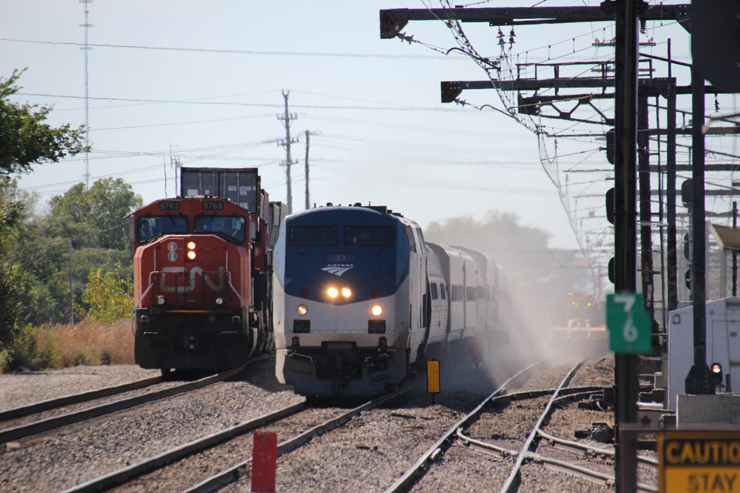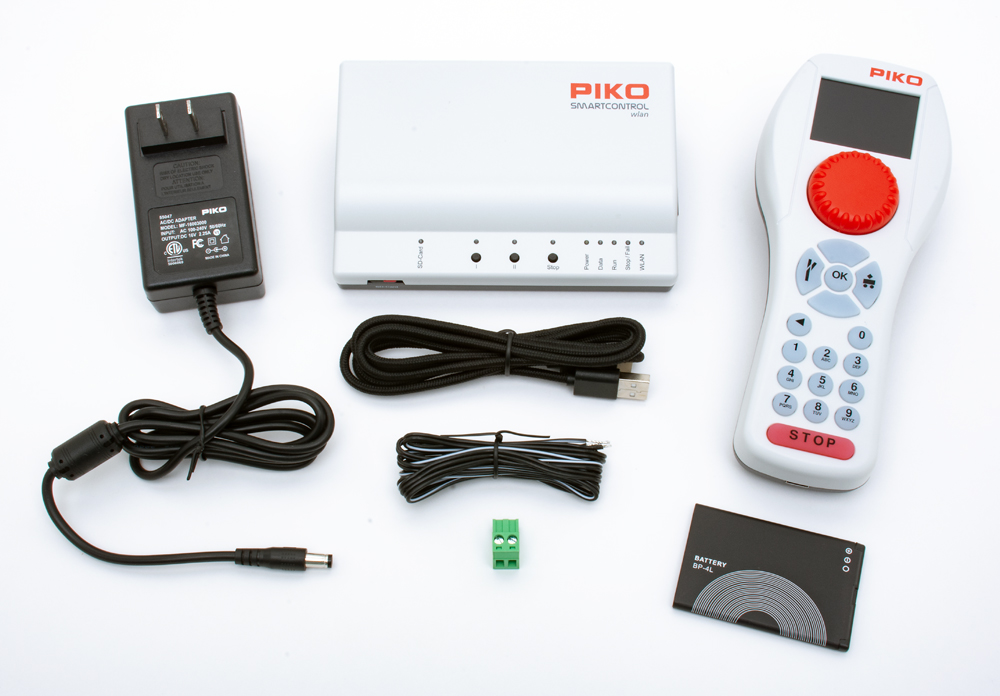
PIKO is a well-known European manufacturer that has a following among G scale modelers in the United States. More recently, the firm has released HO scale engines for the North American market, including a Whitcomb 65-ton switcher and Krauss-Maffei ML-4000 diesel-hydraulic locomotive. However, PIKO is also a producer of Digital Command Control (DCC) products, ranging from decoders to full control systems. In this review, we’ll take a look at its newest release, the PIKO SmartControl wlan (wireless local area network) introductory set.
System features
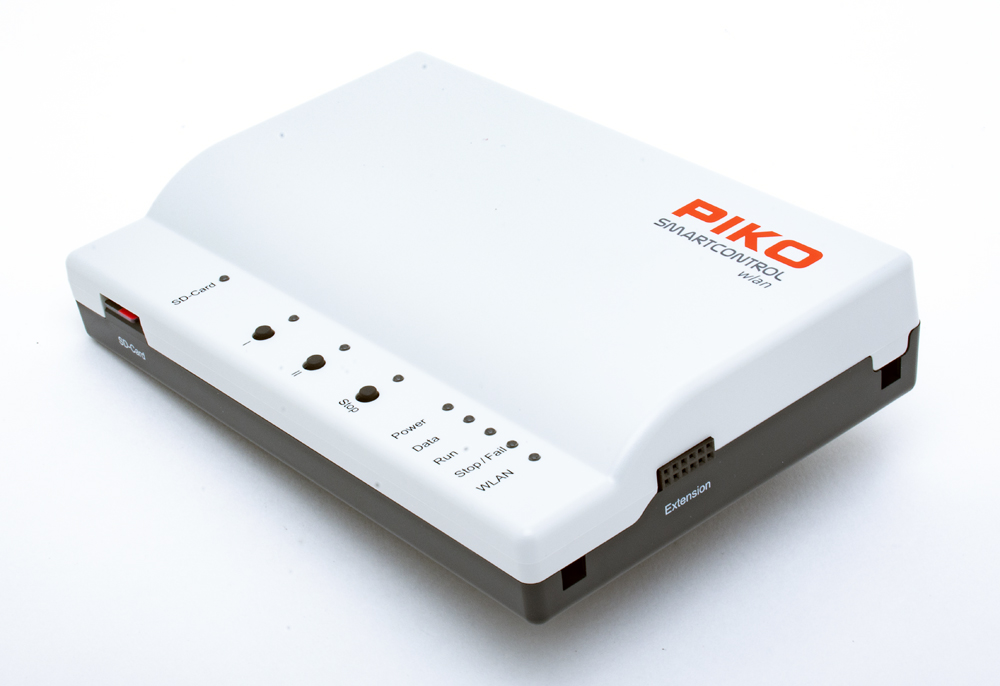
The PIKO SmartControl wlan DCC system offers a number of progressive features commonly found on more advanced and expensive offerings. Chief among these is wireless remote control via the SmartController throttle. The throttle connects to the base station by its own wlan; up to four can connect at once. The throttle has a color display and lighted keys. You can also load your own locomotive images into the controller screen.
RailCom Plus, which has been in PIKO decoders for some time, allows a locomotive with a RailCom Plus decoder on the track to automatically identify itself to the system through two-way communication. This means you no longer have to change the address on a new locomotive just to be able to control it. The system also handles DCC decoders without RailCom Plus. To make it easier to access desired locomotives once they’ve been used with the SmartControl wlan, they’re stored in a database on a microSD card included with the system.
Beyond the basics
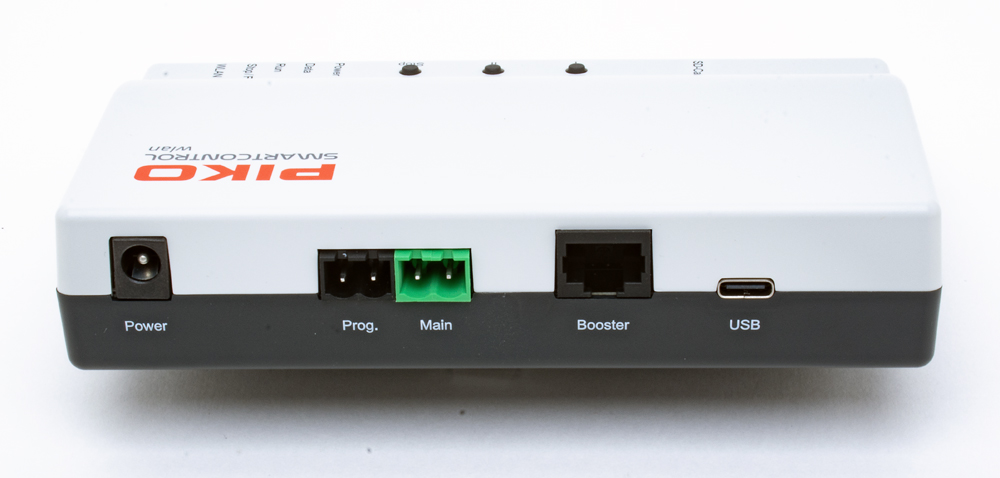
The introductory set capabilities may be restricted in some aspects due to memory or processor limitations, but can be upgraded to the full SmartControl system functionality. First, although an almost unlimited number of locomotives can be stored on the SD card, the introductory system can only control 16 locomotives individually or as part of a consist at any one time. The unit supports 14, 28, and 128 speed step formats, and this data format can be set individually for all locomotive addresses. Additionally, up to 69 functions can be configured for each locomotive address.
The introductory system supports 54 accessories, but this can be expanded to 128 with addresses ranging from 1 to 2,048. It also features a route memory for three train routes, with six switching commands for each route. This can be expanded to up to 18 different routes.
The command station delivers 2 amps to the main track and features short-circuit and overload protection. This enables multi-train operation of up to five trains (depending on the gauge) without having to use additional boosters (which are available). Track power is controlled primarily by the output voltage of the power supply, which is 16VDC at 2 amps. However, due presumably to power use by the PIKO SmartControl wlan system, I measured 15.7 volts. The rectifier circuit in the decoder should drop the motor voltage down to about 15 volts. While this may be fine for HO, TT, and OO scales, some modelers might prefer a lower track voltage for N and Z scales. This should be possible by substituting a lower voltage 2 amp power supply, but I suggest you check with PIKO tech support before doing this.
Throttle features
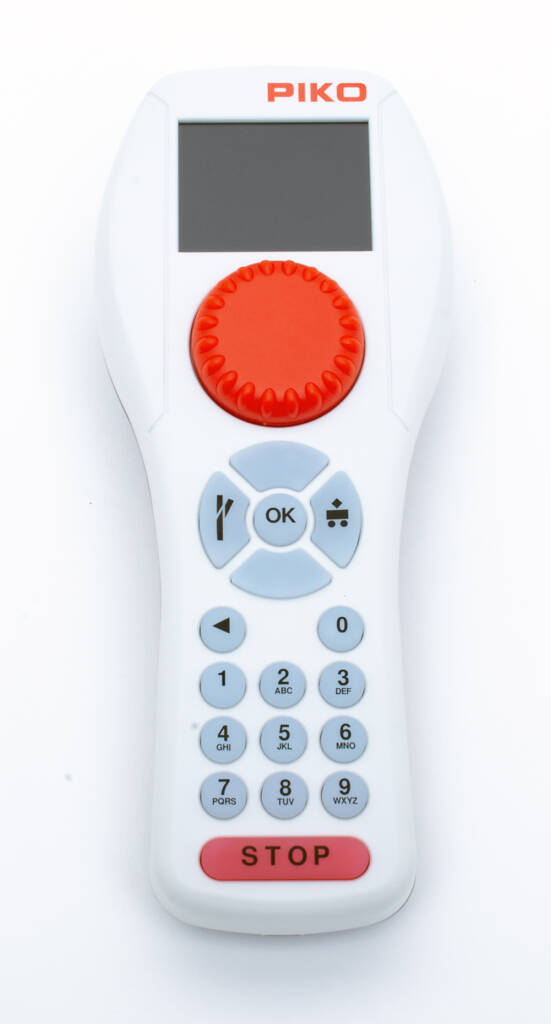
Locomotive control, editing, and programming is done with the SmartController wireless throttle. The throttle is powered by a 3.7V/1400mAh lithium ion battery, which can be recharged with a USB-C cable (both included with the set). The PIKO SmartControl wlan DCC system can be operated via Wi-Fi in AccessPoint mode (the system’s self-contained Wi-Fi network), or by connecting the system to an existing home network in station mode.
The separate programming track output allows you to create an isolated service mode programming track. When the programming track is in use, the main track output is switched off. Only one screw terminal adapter was provided for both the main track and programming track connections. Although these are readily available, I suggested to PIKO that it provide one for each socket.
In addition to the service mode programming track, the SmartControl wlan supports programming on the main (POM and XPOM). I typically do most of my programming on the main after initially testing a new installation on the current-limited service mode track.
Ease of use
PIKO SmartControl wlan DCC system is quick and easy to set up, requiring a connection to the main track using the screw terminal connector, plugging in the power supply, and turning on the throttle using the Stop button. Since this was the first use, I had to pair the SmartController throttle with the SmartControl wlan system. This required pushing a couple of buttons when prompted on the screen.
As soon as the units were communicating, I put an Atlas HO scale RS11 on the track. Since the model had a RailCom Plus-capable LokSound decoder, the address and description popped right up. Hitting the “0” button turned on the headlight and “2” sounded the horn. The large red throttle knob made it easy to control the speed, and a double tap on it when set to speed step “0” reversed the direction of travel. The throttle is ergonomically designed and fit comfortably in my hand. Most importantly, the central location of the control knob makes it convenient for both left and right-handed users.
Running a locomotive that isn’t already stored in the database or that doesn’t have a RailCom Plus decoder requires a bit more work, especially the first time. I found that by closely reading the manual and doing each step as described, I was able to easily set the speed step mode, enter the address, save the newly created locomotive, and begin running. The sounds and functions then worked as normal by pressing the usual button on the throttle.
Further editing options are available, and the PIKO SmartControl wlan has a comprehensive menu system to lead you through the process. Just be patient and follow the steps as directed. This is true whether setting the station options, editing locomotives, or programming decoders. Because the menu system is so comprehensive, I suggest sitting down at a desk or table, connecting the system to a piece of test track, then patiently going through each procedure as described in the manual. If you get frustrated, don’t start pushing buttons at random to see what might work. Walk away and return once your mind has settled down.
The PIKO SmartControl wlan is a highly capable introductory system with the ability to be expanded and upgraded as your needs increase. I especially appreciated the ergonomic design of the throttle and the extensive manual that leads you through the process of learning the menu system.
Facts & features
Price: $259.99
Manufacturer
PIKO America
4610 Alvarado Canyon Rd., Ste. 5
San Diego, CA 92120
Features
- 16VDC, 2 amp power supply
- Accessory decoder addresses 1 through 2,048
- RailCom Plus implemented
- Service mode and programming on the main
- SmartController wireless handheld throttle
- Supports up to 61 functions
- Up to four throttles on the network
- Up to 16 simultaneous locomotives, consists, and locomotives per consist
- Up to three 6-step macros









